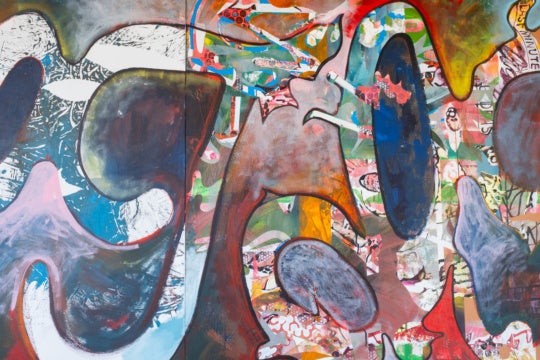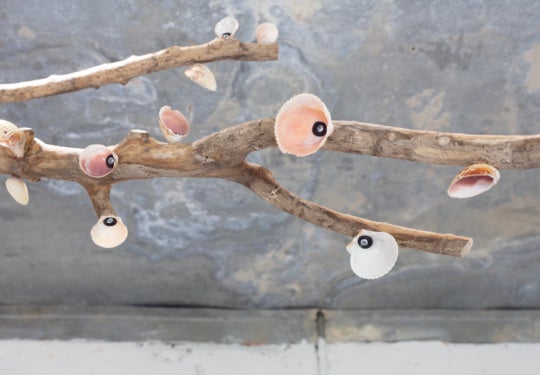In the Murshid, one found joy and pain simultaneously, the way of the broken heart both agonizing and jubilant, never indifferent or low key.The Message in Our Time: The Life and Teaching of the Sufi Master, Pir-O-Murshid Inayat Khan
Track 1: No Ordinary Love
New Orleans has always been like a lover I could not leave. Source of perpetual heartbreak—everywhere, beauty so hard it chokes. Around every corner—the opportunity for total prostration. An obsessive, troubled, genius love, the city was the one they said, I had to let go in order to be the “best” version of myself. Then just when I was about to turn my back, the city left me before I could leave it.
In the Sufi tradition, heartbreak is sometimes described as one of the ego’s surest routes to the face of god. Prostration, if it doesn’t kill you, can be alchemic. This is one of these unfortunate and exquisite truths. The water rushed in and out all that had proceeded it. It was a death and education not many of the living receive. Now you know it said, now you know exactly from what you are made. Looking at oneself in truth does not always bring happiness but perhaps to a sublimity worth pursuing. I listen to Sade on both my best and worst days. I listen to way the music and the words bend to meet me where I am, I understand the dexterity of what she accomplishes anew each time.
Sade, the UK band is fronted by Sade the woman. Her debut album, Diamond Life was released in 1984 and sold over 10 million copies worldwide. A quietly volcanic presence, she lives a special life in New Orleans. Her voice and band’s arrangements animate some of the earliest bounce recordings. Every album holds an archive of every decade of my life. A sonic constant in this long series of make ups to breakups. New Orleans is the city of ego-death, the birthplace of the soul—it will take yours if you’re not careful. Maybe if you’re lucky. It is the place where so spare is the fabric of space and time, that the dead live, interred above ground alongside the living. Alongside also, those entities which occupy the liminal space between—threads constantly unraveling. To keep your wits, much discernment is required.
Whatever you create, you must carry. If your blood is in the soil, you must remember, no matter how far you wander, the blood calls itself home. Careful who you love.
Track 2: Feel No Pain
The Port of New Orleans is one of the busiest in the world. It ranks first in domestic trade, second in the country for total foreign trade and third for overall imports and exports. It all comes at a price. And so, heroin hit the city hard. Growing up we sang songs with hooks like, give me some her-ron please, ‘cause powder makes me sneeze. It was all so innocent, but deadly. In Dr. Carl Hart’s, Drug Use For Grown Ups1, he argues heroin use is more sociology than pharmacology that can explain. Hart posits that the better social and emotional conditions for the user the less likely they were to form addictions. And that dependency and addictions can be managed with better public health policy. Hart cites countries like the Netherlands, where heroin is administered to those unsuccessfully treated by methadone therapy, and drugs can be tested for contaminates resulting in significantly fewer opioid deaths than the United States. Federal policy revolves around the classification of drug addiction as a chronic criminal disorder rather than a disease in need of a cure. Treatment from this perspective, its proponents like Hart argue, improves quality of life for the patient and an overall reduction in criminal activity related to narcotic use. It is a policy guided by practicality rather than a fatal sense of morality.
If my old self was a predator, I guess I’d kill him too.
I Need a Bag of Dope, a 1993 Cash Money tape from Baby, (then B-32; Baby with the 32 golds) featuring New Orleans super-producer, Mannie Fresh’s production is testament to an ongoing social quandary in the United States. Why must people suffer? What else can you do but dance when you survive another day on land that conspires daily to kill you? Bounce is dance music for those whose intention is jubilance even when stricken from within. Something of a sonic collage, traditional bounce layers the 1986 and 1987 tracks “Drag Rap”—better known as the Triggerman Beat—and “Brown Beats” by Queens group, The Showboys and the Bay Area’s, DJ Cameron Paul, with elements of traditional jazz and brass music. Mannie Fresh and Gregory D’s, “Buckjump Time”, TT Tucker and DJ Irv’s “Where They At,” “Bounce Baby Bounce” from Everlasting Hitman, and Mia X’s “The Payback” are early era classics that brought the Soul Rebel’s tuba notes and the sound of opposite coasts to the mouth of the river. Syncretism is what we do best in New Orleans. Take it all in and make it new. Live and die, die and live again. We do it because it has to be done, because the spirits call for it. Most bounce songs make no separation between death, love, sex and violence. It’s all there a half a note or inflection away–one can so easily be another.
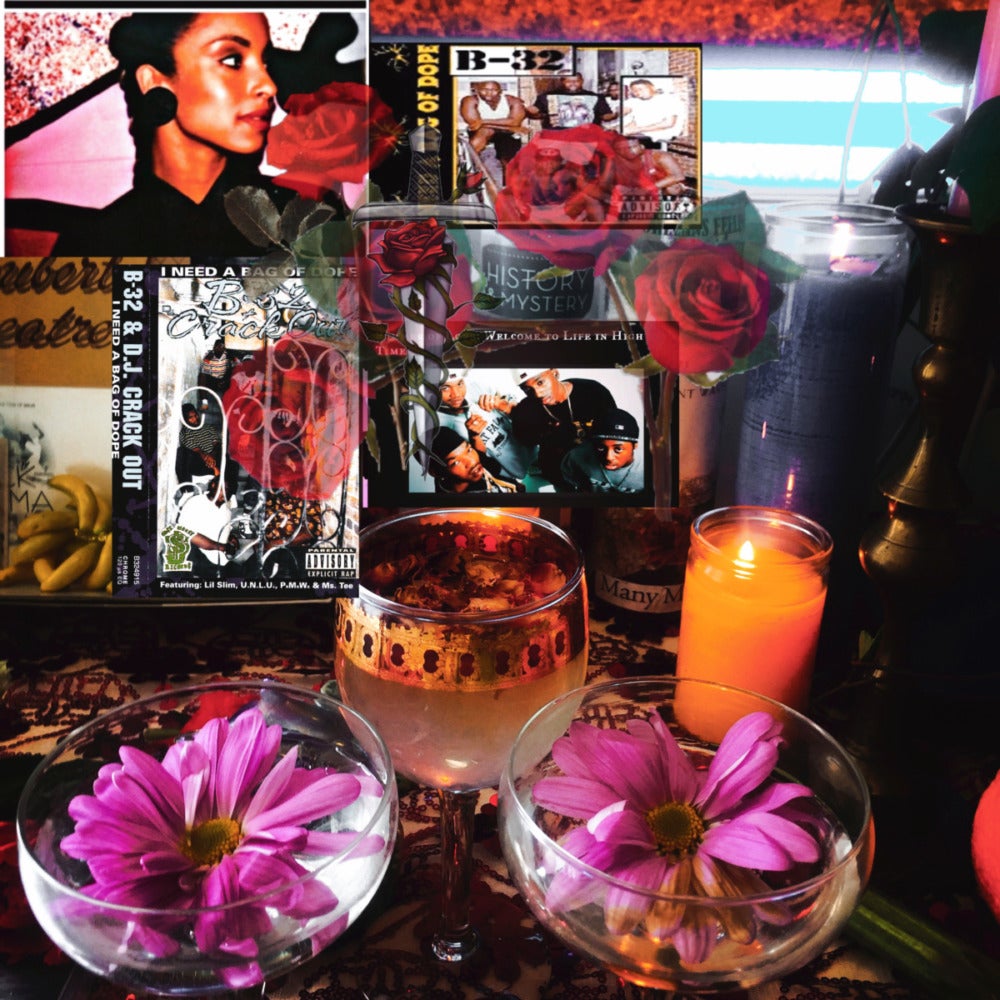
Track 3: Couldn’t Love You More
Sade takes years. Gives us years. We know good music in New Orleans. We know good musicianship when we hear it. That thing you’re hiding, let’s do it in public, the city says. New Orleans holds space for the contradictions that make many other places uncomfortable. That relationship between sex and death; neither the culture, its music, nor Sade shies away from confronting. Maybe this is some of the source of Sade’s popularity in nineties New Orleans and her enduring place in our cultural memory. By the time the UK singer and her eponymous band had released their fourth studio album, Love Deluxe, she had already become a sonic muse and companion to New Orleans’ new sound. UNLV (Uptown Niggas Living Violent) also featuring Mannie Fresh’s production samples her lush “Nothing Can Come Between Us” from Stronger than Pride. Another early Cash Money album from now cult legend, Edgar Givens, known to the public as “Pimp Daddy” features a few Sade samples including Stronger Than Pride’s, “Paradise”. God bless the dead is the refrain. Meanwhile, “Couldn’t Love You More” continues to live a parallel existence in this far reach of the South as Dolamite’s, “Hustla”. The most elite among us could slow drag their extended foot like Michael Jackson’s moonwalker when doing the accompanying dance.
Track 4: Like a Tattoo
My oldest tattoos are:
Red, black, green and yellow stars on my ankle. I forget they are there. Two roses etched on the inside of my wrist–Our Lady of Guadalupe above them.
My first love did those tattoos. After Katrina, he tattooed Mista Meana of Partners-N-Crime’s back. We were young and this was and is still a big deal to me. Partners-N-Crime gave us a decade plus of hits. “Pump tha Party” in 1995 to “So Attracted” in 2009. Tim was taught tattooing mostly by Jacci Gresham. Gresham is the owner of Aart Accent, Louisiana’s oldest tattoo shop. Gresham is widely credited as the first Black female tattoo artist. I spent a lot of time in the now closed Lower Ninth Ward location, on or near Flood street. My memory is awash in many griefs by now, but what remains is a permanent respect and gratitude for the space to just be. In Aart Accent’s Rampart Street location there is a framed photo of the shop’s 2009 staff. A tattoo magazine had profiled the shop and Tim was very happy about that. He died later that year, way too soon at just twenty-seven years old, two weeks after our son turned one. Before he left he taught me two things, how to shoot and how to sing.
Careful who you love.
Track 5: Kiss of Life
Sade’s poetics and Mannie Fresh’s sonics are ethereal in even the hellish terrain of “I Need A Bag of Dope”. His remix of “Kiss of Life” is still my favorite moment in their love affair. Love Deluxe came after a four-year period of silence from Sade. In a 1992 interview with then E reporter , Arthel Neville, from a well-known New Orleans musical family, Sade talks about her life from the long view. It’s not widely remembered now, but in the nineties, Sade was beset by rumors of drugs and emotional issues. Neville asked her if she worried much about the rumors. No, she said. No because in time, people would come to understand who Sade is and her impact.
Love Deluxe has a lot of my life wrapped up in it. I can smell the hot wet summer concrete and public pool where I first heard, “Feel No Pain.” I remember it on a loop in my neighbor’s backyard pool, where I learned to swim. “Kiss of Life,” I thought I would dance to it at my wedding. We talked about it. Wouldn’t that surprise everybody? Wouldn’t they be proud of us?
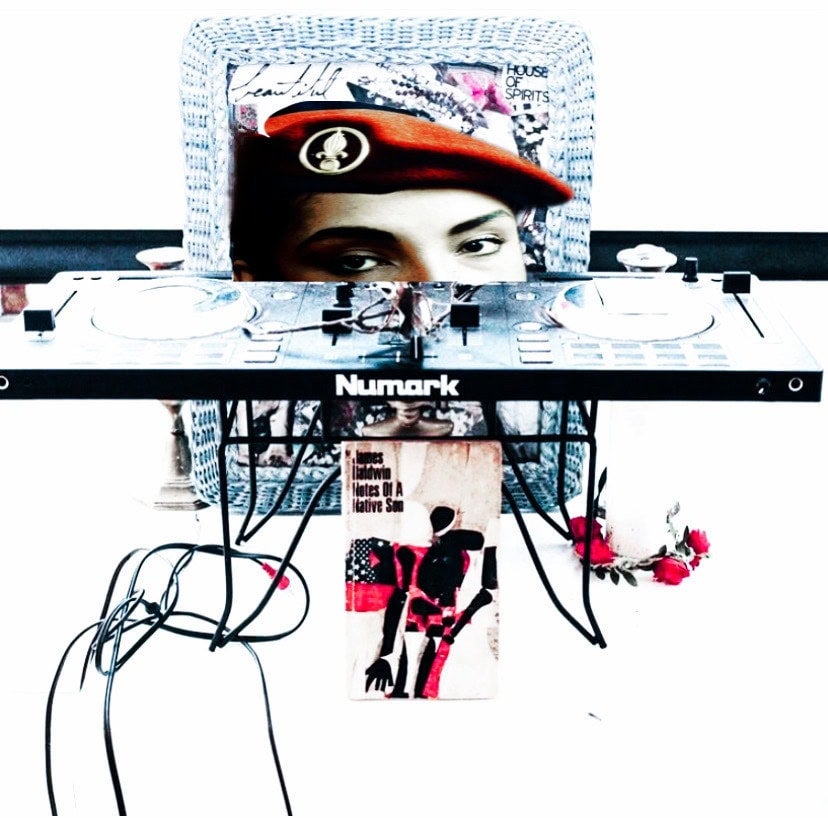
Now do you like that?
I do, I said.
Track 6: Cherish the Day
After Hurricane Katrina, culture became strange. New Orleans had always been several cities in one and now this was amplified by the hundred thousand missing Black residents never to return and a mix of grief and gentrification that brought in an influx of new ones to replace them. Fifteen years of displacement and non-profits brought about a set of cultural phenomena that was invested in the aesthetics of New Orleans culture but not its ethics. Local and not, we all were made new to one another. A wall of water has a way of doing that.
I found myself socially and professionally adrift. In that cacophony of people, I met some great ones and some terrible. Love Deluxe holds this part of my life too. Holds the lives of so many that Sade sang alongside as they fell apart and put themselves back together again. Maybe this fugue of grief accounts for the signs I missed about an ex. Maybe all I saw was what I heard when listening to Sade with them. They said they aspired to make music that good. I said I wanted to be as good a writer as her.
Can you date an artist if you don’t like their work? I tried. I was appreciative of their talent but not the product they created with it. I remember after a period of silence between us they showed up at my house to show me a video they had made of themselves driving through our old neighborhood in New Orleans East with an overlay of Sade’s “Kiss of Life.”
Now do you like that?
I do, I said.
Track 7: Bulletproof Soul
After completing a three-year study in fashion design, Sade began backup singing with British band Pride. Sade’s place in the band was only supposed to be temporary. They had settled on her after not finding a singer with a more traditional vocal technique. Sade’s career is born from rejection. Like most rejection, it is most often a starting point not an end. She began songwriting with Pride’s guitarist/saxophonist Stuart Matthewman, and then backed by Pride’s rhythm section, they began doing their own sets at Pride shows. “Smooth Operator” was their breakout composition and in 1983 Sade became its own.
This ex of mine had a habit of taking things. Necklaces or bracelets little odds and ends of mine on their wrists in their pockets. I thought it was odd but I paid it no mind. We all have our eccentricities. They were always eyeing the cassette tape of Stronger Than Pride I kept on the mantle in my bedroom. I was always concerned they might swipe it. Looking back, that was a strange feeling to have about someone you loved, but maybe not unfamiliar. New Orleans had raised us not to be naive about the lengths people might go to get what they wanted.
Two songs from Stronger than Pride function sonically as a four-year bridge into Love Deluxe: “Give it Up” and “Clean Heart”. I listened to these two a lot at that time, and to Love Deluxe after that relationship dissolved. When my necklace, my mother’s necklace dangled in the frame of this ex’s video on Complex, I listened to the oldest work of Mannie Fresh I could find. He had built the architecture of the sound of an era from the sonic collage of his own experience. I could, I had to make something of my own.
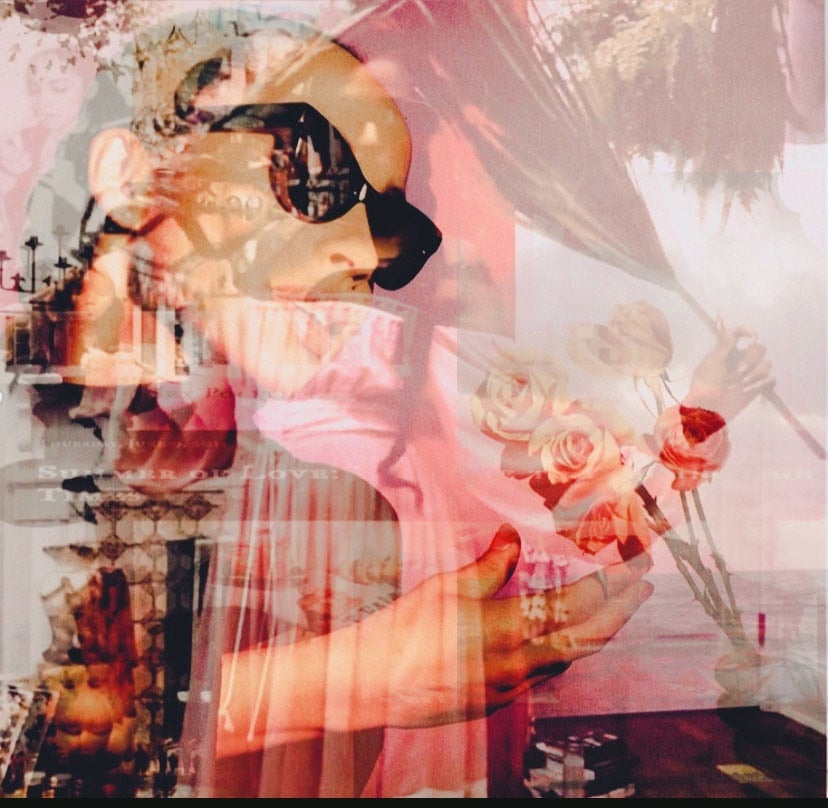
Track 8: Pearls
If my old self was a predator, I guess I’d kill him too. I look at new photos of my ex, an assaulter in their new clothes and new persona. I suppose they are trying to save others the trouble. But this is what they always wanted, to die —and I am happy for them. Maybe this person will be better than the one who did such an awful but brutally mundane thing. As for my own body, my soul—it houses the memory and the weight. I try to take care.
Hold it or let it go are not choices one has in New Orleans. It is a both/and existence. It is intolerant of liars— it will pull it right out of your guts for everyone to see. Michaela Coel’s groundbreaking series, I May Destroy You follows the aftermath of its main character’s sexual assault. In the season finale, titled “Ego Death,” Arabella plays out a number of possibilities for dealing with discovering the identity of her assailant from murder to penetration. Having thought of my own assailant once as a lover, as a friend—I felt my ego die twice over in order to understand that the assailant and the person who I loved, were one and the same. I could not parse reality —it had all happened. In what can only be rationalized as an extension of the trauma of being so familiar, I met with them a couple years after the incident to “talk about what had happened.” If it sounds crazy it’s because it is. CPTSD, (Complex Post-Traumatic Stress Disorder) it has a name, I would learn. So often, we navigate the carceral and non-carceral world as Black women and femmes alone.
Refusing to be broken by the incongruity of my experience. This is what power I have. “Pearls” might be one of Sade’s only actually sad songs. So many other songs grapple with sadness but “Pearls” declares and wails its grief. Whatever you create, you must carry. If your blood is in the soil, you must remember, no matter how far you wander, the blood calls itself home. Careful who you love.
Track 9: Mermaid
The full spectrum of gender and sexuality are an ocean whose floor we have yet to see. There is so much more to explore than what we are offered by a society mostly bent on the control and domination of pleasure for some and pain for others. So much of bounce music is an escape from these strict binaries. A place to free the body from the rules, from fear–the notion that one must harm, must take what is offered in love to have power.
“Mermaid” is the song we wrote to in college, my oldest friend and I. Love Deluxe was the album I was listening to the week the city left me. It is a beat, a wave that comes in big, I have no choice but to ride it.
1“Drug Use For Grown-Ups Serves As An Argument For Personal Choice”, NPR.

This essay is part of Burnaway’s yearlong series on Word of Mouth.
Find out more about the three themes guiding the magazine’s publishing activities for the remainder of 2021 here.


